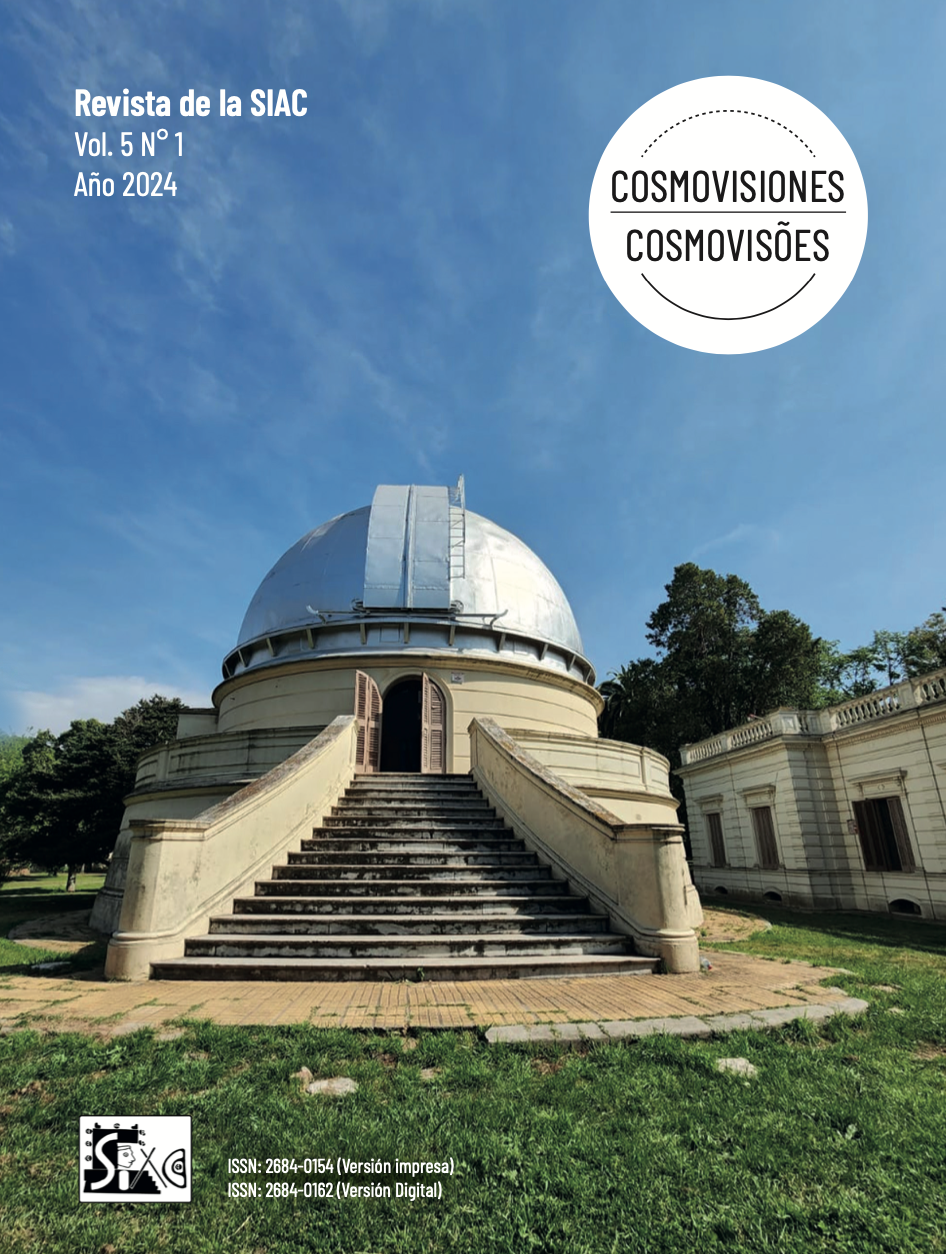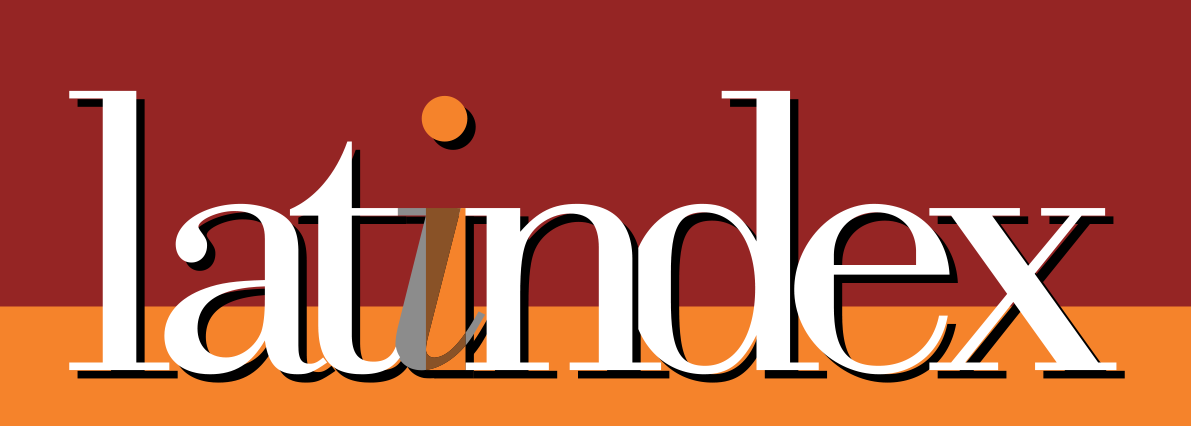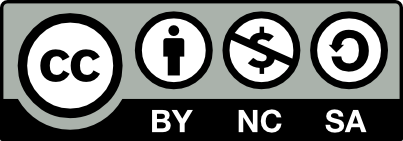Norman Lockyer and the Controversial Beginnings of Archaeoastronomy
DOI:
https://doi.org/10.24215/26840162e023Keywords:
Norman Lockyer, Edfu, Stonehenge, Boscawen-Un, Avebury, archaeoastronomyAbstract
It has long been acknowledged that Norman Lockyer played a central role in the foundation of archaeoastronomy in the late nineteenth and early twentieth centuries. His interest in what was then referred to as “orientation” flourished on a visit to Egypt, where he became convinced that rigorous scientific methods could be used to prove archaeological theories concerning ancient religions.
However, despite the prospect of a well-known intellectual entering the sparse discourse around archaeoastronomy, little happened to promote the discipline after the Egyptian expedition.
Whilst Lockyer is often framed as a lonely figure working at the dawn of the field, newly digitised lantern slides from the Norman Lockyer Observatory archives reveal his extensive interactions with a dedicated network of British archaeoastronomical researchers. Lockyer’s work, along with that of his new community, came at a very unfortunate time. This paper seeks to explain why his archaeoastronomic work was not well-received by prominent archaeologists, and why the discourse around archaeoastronomy up until his time smothered Lockyer’s attempts to legitimize orientation.
Downloads
References
Death of Sir E. Antrobus: Owner and guardian of Stonehenge. (1915, February 13). The Times. https://www.newspapers. com/article/the-times-death-of-sir-e-antrobus/46106563/.
Professor Proctor criticised. (1879, December 12). New York Herald. https://chroniclingamerica.loc.gov/lccn/sn83030313/1879-12-12/ed-1/seq-5/.
Sir Norman Lockyer at Penzance. (1906, April 21). The Cornishman. http://WDAgo.com/s/fa298d3f.
The druids at Stonehenge. (1905, August 26). Gloucester Journal. https://www.britishnewspaperarchive.co.uk/viewer/bl/0000532/19050826/108/0008.
Antrobus, E. (1901, May 12–1905, October 27). Correspondence with J. N. Lockyer. http://WDAgo.com/s/7f54f12f.
Barton, R. (2007, October 10). Lockyer’s columns of controversy in Nature. Nature. https://www.nature.com/articles/d41586-019-01813-3/.
Brugsch-Bey, H. (1881). A history of Egypt under the Pharaohs: Derived entirely from monuments. John Murray.
Curran, A. (2014). Anthropology. In D. Brewer (Ed.), The Cambridge companion to the French Enlightenment (pp. 29–43). Cambridge University Press.
Dupuis, C. F. (1795). Origine de tous les cultes, ou la réligion universelle. H. Agasse.
Dupuis, C. F. (1806). Mémoire explicatif du Zodiaque, chronologique et mythologique. Libraire pour les Mathématiques.
Eliot, G. (1879). The modern hep! Hep! Hep! In Impressions of Theophrastus Such. William Blackwood and Sons.
Eliot, G. (2014). Daniel Deronda. Oxford World’s Classics.
Finnegan, D. A. (2021). Richard Proctor and the tempo of science. In The voice of science: British scientists on the lecture circuit in Gilded Age America (pp. 94–129). University of Pittsburgh Press.
Frazer, G. J. (1905, March 19–1906, February 2). Correspondence with J. N. Lockyer. http://WDAgo.com/s/a44a097f.
Gingerich, O. (1984). Preface. In Astrophysics and twentieth-century astronomy to 1950: Part A. Cambridge University Press.
Griffith, J. (1928). Sir Norman Lockyer’s astronomical survey of Egyptian temples and ancient British stone monuments. In T. M. Lockyer & W. L. Lockyer (Eds.), Life and work of Sir Norman Lockyer (pp. 395–426). Macmillan.
Henty, L. (2022). Exploring archaeoastronomy: A history of its relationship with archaeology and esotericism. Oxbow Books.
Hutton, R. (2009). Blood and mistletoe:The history of the druids in Britain. Yale University Press.
Hutton, R. (2013). The strange history of British archaeoastronomy. Journal for the Study of Religion, Nature & Culture, 7(4), 376–396. https://doi-org.uoelibrary.idm.oclc.org/10.1558/jsrnc.v7i4.376.
Jarsaillon, C. (2018). Modern Egyptomania and early Egyptology: The case of Mariette’s 1867 Egyptian temple. Nineteenth-Century Contexts, 40(4), 359–376.https://doi.org/10.1080/08905495.2018.1484610.
Kember, J. (2019). The magic lantern: Open medium. Early Popular Visual Culture, 17(1), 1–8.https://doi.org/10.1080/17460654.2019.1640605.
Lockyer, J. N. (1868). Elementary lessons in astronomy. Macmillan.
Lockyer, J. N. (1893). Bundle of notes headed “Science: notes for art students”. http://WDAgo.com/s/049f91a4.
Lockyer, J. N. (1894). The dawn of astronomy: a study of the temple-worship and mythology of the ancient Egyptians. Cassell & Co.
Lockyer, J. N. (1906). Stonehenge and other British stone monuments astronomically considered. Macmillan.
Lockyer, J. N. (1906, December 13). Notes on ancient British monuments I – the Aberdeen circles. Nature, 75(1937), 150–153. https://doi.org/10.1038/075150a0.
Lockyer, J. N. (1907, November 21). Notes on ancient British monuments I. Nature,77(1986), 56–59.https://doi.org/10.1038/077056a0.
Lockyer, J. N. (1907, November 28). Notes on ancient British monuments II – the Cornish cromlechs. Nature, 77(1987), 82–84. https://doi.org/10.1038/077082a0.
Lockyer, J. N. (1907c, December 19). Notes on ancient British monuments III –some measurements in South Wales. Nature, 77(1990), 150–152.https://doi.org/10.1038/077150a0.
Lockyer, J. N. (1909). Surveying for archaeologists. Macmillan.
Lyons, H. G. (1892). The stars and the Nile. Nature, 47(1205), 101.https://doi.org/10.1038/047101a0.
Meadows, A. J. (2008). Science and controversy: A biography of Norman Lockyer. Macmillan.
Michell, J. (1989). A little history of astro-archaeology: Stages in the transformation of a heresy. Thames & Hudson.
Morrison, T. (2012). Solomon’s Temple, Stonehenge, and divine architecture in the English Enlightenment. Parergon, 29(1), 135–63.https://doi.org/10.1353/pgn.2012.0033.
Nissen, H. (1887). Uebertempel-orientirung. Rheinisches Museum Für Philologie, 42, 28–61. http://www.jstor.org/stable/41248094.
Notables of Britain: an album of portraits and autographs of the most eminent subjects of Her Majesty in the 60th year of her reign. (1897). London Review of Reviews. https://archive.org/details/notablesofbritai00londuoft/page/156/.
Panckoucke, C. L. F. (1820). Description of Egypt. Second edition. Antiquities, volume one plates. Library of Congress. https://www.loc.gov/item/2021669215/.
Payn, H. (1911, October 19). The orientation of the Great Temple of Amen-Ra at Karnak. Nature, 87(2190), 514–515.https://doi.org/10.1038/087514c0.
Penrose, F, & Penrose, F. C. (1875, July13–1906, April 28). Correspondence with J. N. Lockyer. http://WDAgo.com/s/b3e45893.
Penrose, F. C. (1893, December 31). On the results of an examination of the orientations of a number of Greek temples with a view to connect these angles with the amplitudes of certain stars at the time the temples were founded, and an endeavour to derive therefrom the dates of their foundation by consideration of the changes produced upon the right ascension and declination of the stars by the precession of the equinoxes. Philosophical Transactions of the Royal Society of London, 184, 805–34. https://doi.org/10.1098/rsta.1893.0016.
Petrie, W. M. F. (2013). The pyramids and temples of Gizeh. Cambridge University Press. (Original work published 1883)https://doi.org/10.1017/CBO9781107325227.
Polcaro, A.,& Polcaro, V. F. (2009). Man and sky: Problems and methods of archaeoastronomy. Archeologica e Calcolatori, 20, 223- 45.https://www.researchgate.net/publication/277844862_Man_and_sky_problems_and_methods_of_Archaeoastronomy.
Ryan, J. (1997). Picturing empire: Photography and the visualization of the British Empire. Reaktion Books.
Smith, J. W. (1910, October 21–27). Correspondence with J. N. Lockyer. http://WDAgo.com/s/d9f54c60.
Smith, W. R. (1889). Lectures on the religion of the Semites. Adam & Charles Black.
Smyth, P. C. (1870, December 2–1890, April 24). Correspondence with J. N. Lockyer. http://WDAgo.com/s/e0e72fda.
Smyth, P. C. (1864). Our inheritance in the Great Pyramid. Alexander Strahan.
Somerville, B. T. (1909). Ancient stone monuments near Lough Swilly, County Donegal, Ireland (Part I). Journal of the Royal Society of Antiquaries of Ireland,39 (2), 192–202.http://www.jstor.org/stable/25513989.
The Royal Institution of South Wales. (1908). Lecture on the antiquity of the Gorsedd. http://WDAgo.com/s/fa298d3f.
Williams, K. J. (2016). The antiquary: John Aubrey’s historical scholarship. Oxford University Press.
Downloads
Published
How to Cite
Issue
Section
License
Copyright (c) 2024 Beatrice H. Steele

This work is licensed under a Creative Commons Attribution-NonCommercial-ShareAlike 4.0 International License.
Authors who publish in this journal agree to the following terms:
The authors retain intellectual authorship of the work and guarantee the journal the right to be the first publication of the work.
Authors may share the work with acknowledgment of authorship and the initial publication in this journal.
Authors may separately establish additional agreements for the non-exclusive distribution of the version of the work published in the journal (for example, placing it in an institutional repository or publishing it in a book), with an acknowledgment of its initial publication in this journal.
The journal offers free access ("open access") to all its content. The articles are available to be read, downloaded, copied, printed and/or researched according to the Creative Commons license: CC BY-NC-SA (Attribution - Non-Commercial - Share Alike-4.0 International)

The content of the journal is fully available from its publication. Readers are required to correctly cite the journal and the author of the downloaded content
















